Account Based Marketing vs. Inbound Marketing [Comparison]
When facing ambitious marketing and revenue goals to fulfill for the company, many of us will start looking for new strategies but can face a dilemma between choosing outbound and inbound ones.
If this is the case for you, then let us help you with your choice by introducing and comparing two prominent methodologies – account-based marketing and inbound marketing.
What is Account Based Marketing?
Account-Based Marketing (ABM), also known as Key Account Marketing, is the synergy of sales and marketing tactics, processes, and tools to promote and sell your products to a narrow group of individuals working in your target companies. ABM teams nurture relationships with these contacts to convert them into paid customers.
To get a grasp of this marketing strategy, let us showcase a couple of real-life examples.
Examples of account based marketing
There are many ABM tactics out there and we have selected the three most interesting ones for you below.
Direct email campaigns. Instead of sending out bulk emails to thousands of recipients, ABM teams usually write highly-personalized direct emails (which, by the way, have an incredible 90% open rate) and LinkedIn messages to individual contacts. Here is what these messages look like.
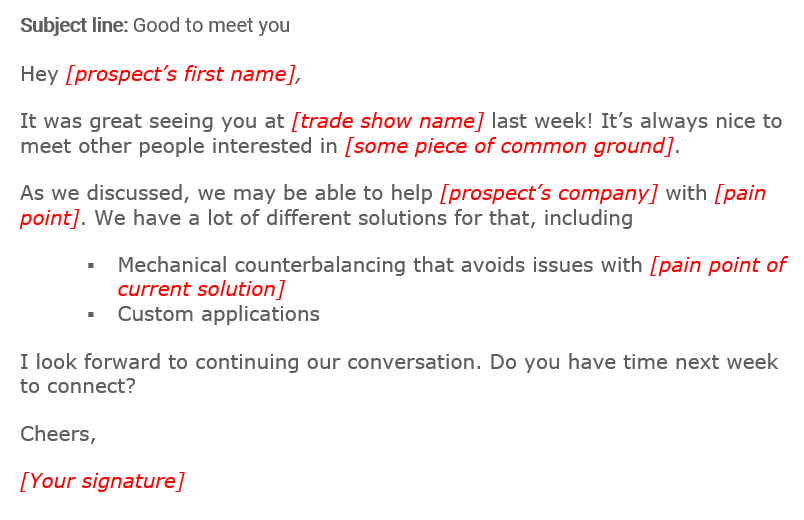
The example above is a follow-up from meeting the prospect during a trade show. As we can see, the level of customization in this message is significantly higher compared to a regular sales email.
Personalized videos. Sometimes account-based marketers use video content in their campaigns too. But, again, these videos target specific accounts. Examples of such content are personalized demos, webinars, and how-to guides.
Although not very common, there are also video invitations to specific events or trade shows that you can send to your key accounts. Here is a mockup of such an invitation.

The recipient of the invitation here is someone named Derek, and the person inviting is the SEO of GrowthHackers. The video above goes on to list the benefits that Derek can get by taking part in the conference.
Customer gifting. Another prominent tactic many ABM marketers use is the old school “send your prospects an IRL gift via direct mail”.
Real physical gifts are great at making your leads feel special, especially if you go above and beyond by doing research and gifting them something they need (e.g.б toys for dogs if they have just gotten a puppy).
To help your prospects identify the gift with your company, you can add your logo and branding on the items you send to them. One of the great examples of this is sending out company swag.

The products we see above belong to Uber Eats. Apart from giving swag to its employees, Uber Eats also uses them as gifts for its partners and B2B customers.
To summarize, account based marketing is an effective tool for sales and marketing teams that helps them to target, nurture, and convert high-value accounts (you can check out more ABM examples in our dedicated guide).
But how different is it from inbound marketing? Let’s not rush and understand inbound marketing first before comparing them two.
What is Inbound Marketing?
Inbound marketing is the set of processes and tools for improving your content, copy, and visibility to make your products and brand attractive to your target audience. The goal here is to drive them into your website, help them go through the buyer’s journey, and become paid customers.
Now let us list several common inbound marketing strategies for attracting organic traffic to your website and generating inbound leads.
Examples of inbound marketing
If you want your audience to find you easily, you need to make sure that your brand is visible on the internet, and here is what you can do for it.
SEO-focused blog content. There is a difference between ordinary blog posts and SEO-optimized ones (not to confuse with SEM).
To help search engines find you and give you high ranks on their SERP pages, you need to provide your readers with valuable information, as well as target specific keywords by strategically placing them in your content.
Here is what an SEO-optimized blog post looks like.
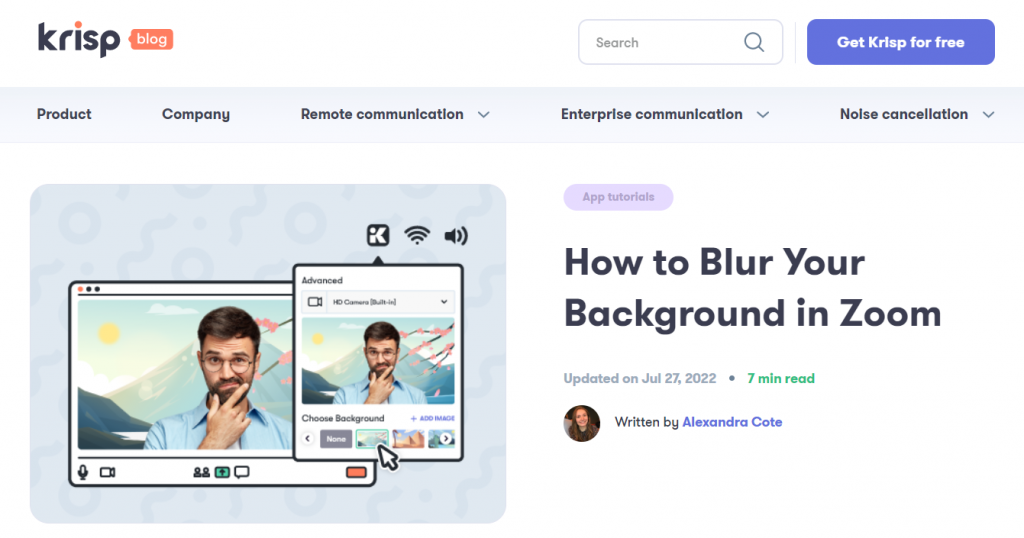
The title of this post is actually a common search phrase among Zoom users. Krisp has optimized its article for that phrase which resulted in it appearing on the first page (ranking 7th) of search results for that keyword and driving organic traffic to its website.
Creating educational content. Online learning is experiencing rapid growth in popularity, with forecasts of its market size reaching $350 billion in 2025.
Inbound marketers take advantage of this by creating educational content and posting it on behalf of your brand. By sharing content that can teach your readers something new and valuable, you can attract a significant amount of organic traffic to your website and strengthen your brand reputation among your target audience and customer base.
Here is what it looks like in real life.
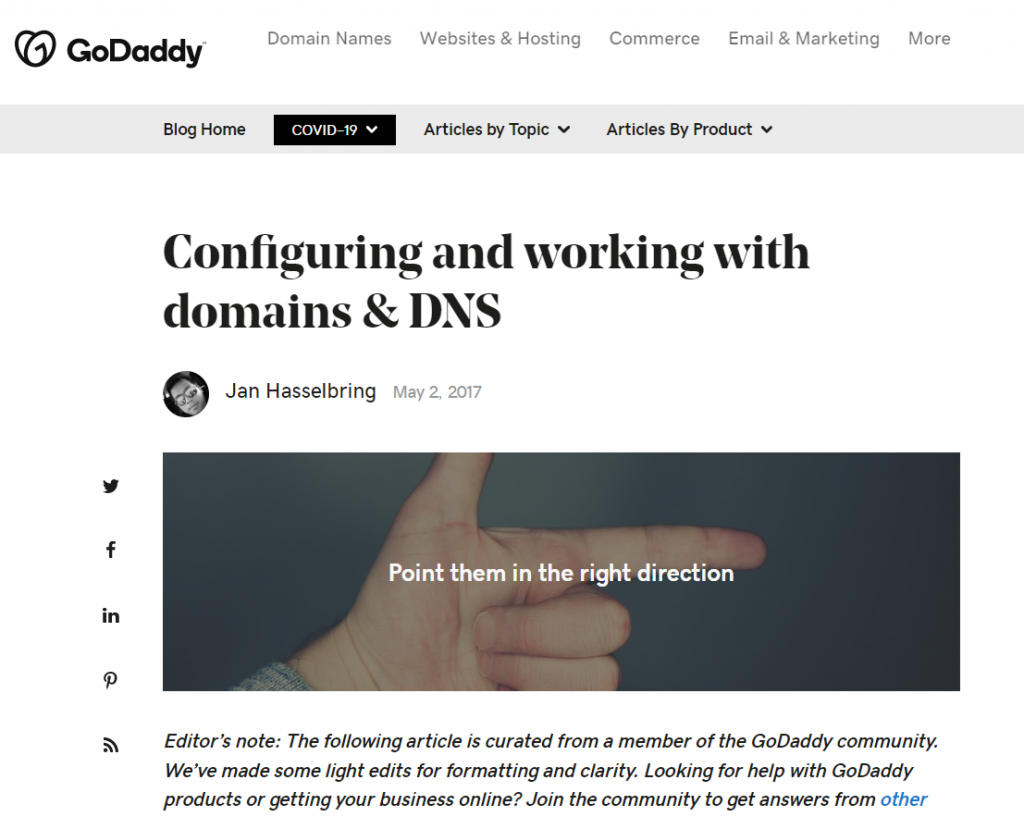
GoDaddy is a popular hosting and domain management service that creates many articles and guides (including the one above) about website management to increase its brand authority in its niche.
Sharing social media content. Social media is another important source of organic traffic for your website when coupled with your content marketing strategy.
By creating valuable content and sharing it on social media (both your own channel and the channels of influencers and KOLs), you can attract the attention and interest of the people that follow you (or your partner influencers) and drive them to your website to learn more about you or your products.
Here is a prominent example of this tactic by SemRush on Twitter.
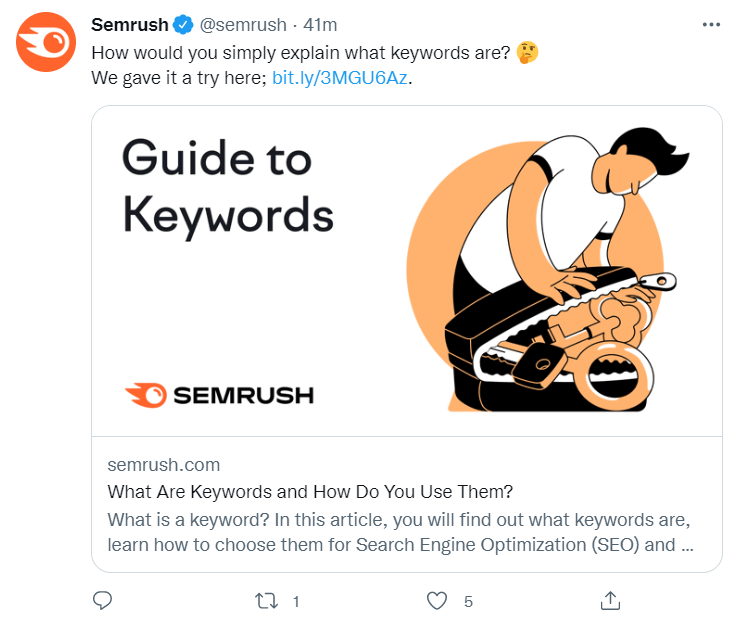
SemRush constantly shares its educational content on its Twitter channel, and the post above was one of them. In this particular case, SemRush’s content team prepared a guide on keywords.
To conclude, inbound marketing campaigns help you make your website attractive and drive organic traffic.
Now that we have covered both types of marketing, we can start comparing them.
How Account Based Marketing and Inbound Marketing Differ?
The main difference between account-based marketing and inbound marketing is that the first one uses outbound marketing tactics to target a few key contacts, while the second one works with the masses by attracting them organically to your website.
Here are a couple of more key differences between them.
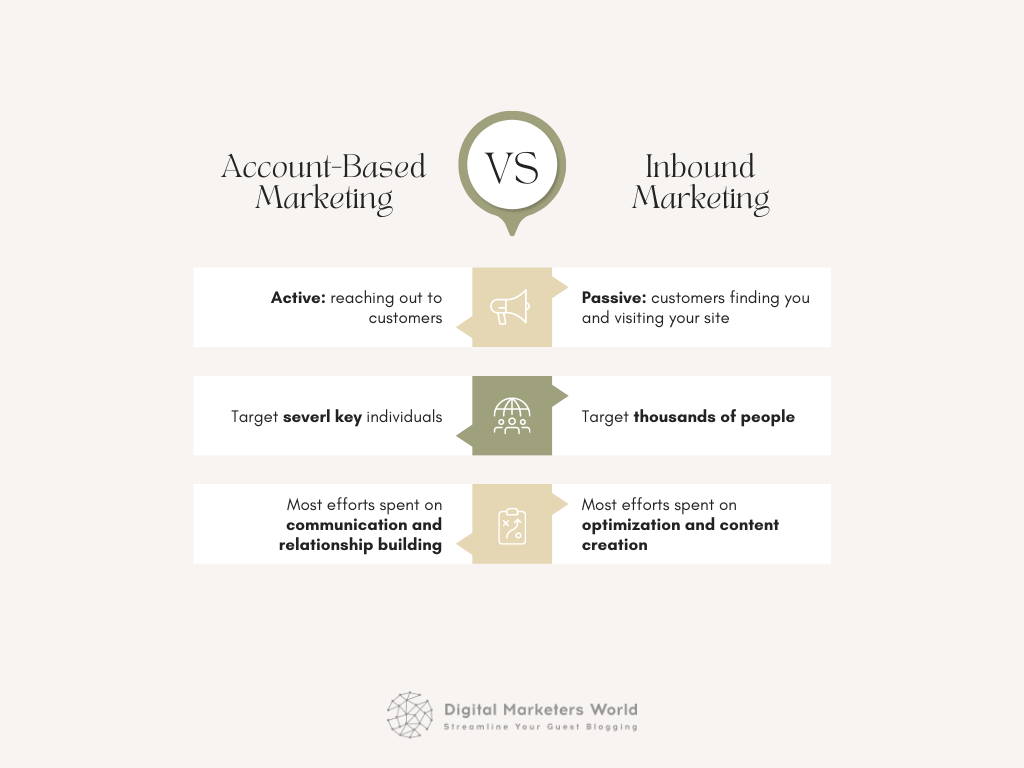
To shed more light on these differences, let us discuss them one by one.
Communication direction: account based marketing approach is proactive. Your team will be the one that makes the first move by identifying and contacting the key decision-makers. With inbound marketing, however, the direction of communication is the opposite, and it is your specific audience that makes the first move by finding you in search results or social media and visiting your website.
Audience size: account-based marketing is about targeting a few people (matching your ideal customer profile) who are stakeholders or decision-makers in their company or community and working on converting them. Inbound marketing, on the other hand, works with the wide public, and its target audience can consist of thousands or even millions of people that match your buyer persona.
Where you spend most of your marketing effort: with account-based marketing, most of your efforts will go into communication with your key contacts to build strong relationships with them and earn their trust. In the case of inbound marketing, it will be relevant content creation and content/website optimization that will take the majority of your time and resources.
Although listing out the differences between ABM and inbound marketing gave us a better understanding of both disciplines, that is not enough yet, and there is another important topic that we need to cover for you – the pros and cons of each marketing type.
Key Advantages and Disadvantages of Account Based Marketing
We’ll start with account-based marketing. Focusing your efforts on a few individuals is not a traditional tactic in digital marketing, and it can result in both significant advantages and disadvantages. Let’s first list the pros of ABM.
Account based marketing advantages
- High ROI: account-based marketing is known for its ability to generate a high return on investment with over 75% of marketers reporting better ROI in 2020 when using ABM. The reason behind this is the laser focus of your teams’ efforts on very few targets which results in more effective communications and relationship building.
- High engagement: thanks to the personal one-on-one communications that your ABM teams manage, you can expect a high level of engagement from your contacts.
- Easy and clear tracking: with ABM, you can directly trace back generated revenue, the number of leads, and other metrics to specific marketing campaigns (something very hard to do with inbound marketing) and measure each account’s performance individually.
With the benefits clear, let us discuss some of the problems you might encounter with ABM.
Account based marketing disadvantages
- Resource-intensive: you might need to make personalized content such as videos and guides for each of your target accounts, spending a considerable amount of content marketing resources.
- Time-consuming: before closing a deal, your ABM team will spend lots of time on the phone and email talking to new accounts and gaining their trust.
- Narrows customer pool: when running ABM campaigns, you are limiting yourself to working with a very specific and narrow group of potential customers and missing out on opportunities outside that group.
As we can see, the ABM strategy is full of advantages, but it is not perfect because of its resource-intensiveness and narrow audience size. Moving on to inbound marketing, let us understand how it compares to ABM with its pros and cons.
Advantages and Disadvantages of Inbound Marketing
Just like account-based marketing, inbound marketing is not a perfect strategy either. It does come with lots of perks, but you need to be careful as there are downsides too. Here is what inbound marketing has to offer.
Inbound marketing advantages
- Cost-effective: running a blog and doing SEO optimizations are relatively cheaper compared to the highly-personalized marketing techniques of ABM.
- Sustainable strategy: inbound marketing focuses on generating organic traffic that is highly stable and sustainable in the long term.
- Increased lead quality: the organic traffic that inbound marketing generates is “high intent,” which means that people who have found your site and visited you are actually interested in your brand and products.
The pros of inbound marketing look great, but what about its cons? Let’s look at some of them up next.
Inbound marketing disadvantages
- Time-consuming: it takes significant time for your content teams to make guides and videos. SEO activities are not quick either, especially large technical audits and keyword research.
- Can be slow: you should not expect instant results from inbound marketing, as it will take time for your content to rank high in search results and your social media channels to gather a sizable following.
- Hard to measure: unlike ABM, there is no direct link between your content/SMM posts and the revenue that you have generated.
To conclude, both account-based marketing and inbound marketing are effective and valuable strategies but there are caveats in both cases that you need to take into consideration when using them.
Now let’s answer a question that has been in your mind all this time. Which one is better for me?
Account Based Marketing vs Inbound Marketing: Which is Better?
Account based marketing and inbound marketing serve different business goals. It is hard to say that one is better than another without understanding what you want to achieve.
Account based marketing would be more effective for you if you are a B2B company with sales teams and your goal is to attract large customers.
With inbound marketing, on the other hand, you can improve your brand awareness and get your B2C or small B2B marketing going.
Ok, if they serve different goals, can I use ABM and inbound marketing at the same time? Let’s find out.
Can ABM and Inbound Work Together?
Inbound marketing and ABM are not mutually exclusive, and it is common for companies to use both.
This is especially relevant when you sell your products to enterprises and small companies (e.g., HubSpot and Jira) at the same time. In this case, you will have an ABM team that nurtures enterprise customers while your inbound marketing team gets you new leads from small companies.
Now Over to You
Account based marketing and inbound marketing are both highly capable strategies for increasing your sales revenue. To decide which one is better for you, you need to look at the goals you want to pursue and your growth strategy.
Digital Marketers World is a treasure trove for educational content on digital marketing. Check out our blog for more.

Sona Kalantaryan is a senior digital marketer with a creative past. Big fan of high cinema and well-optimized landing pages. She authors guides by sharing the best practices and does it the right way!
